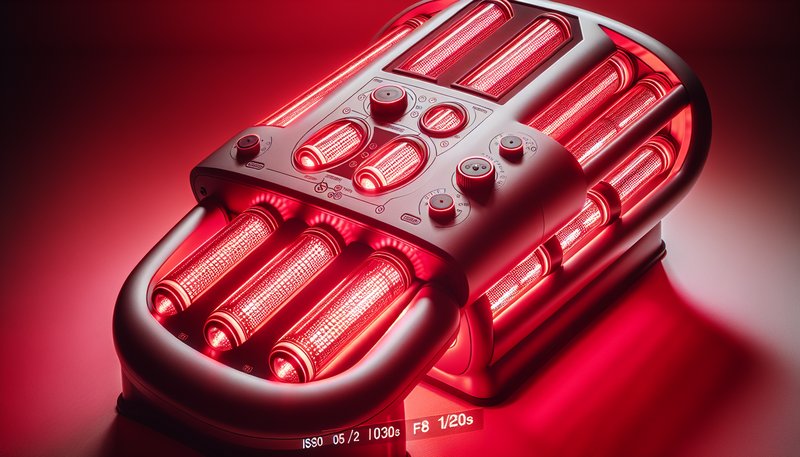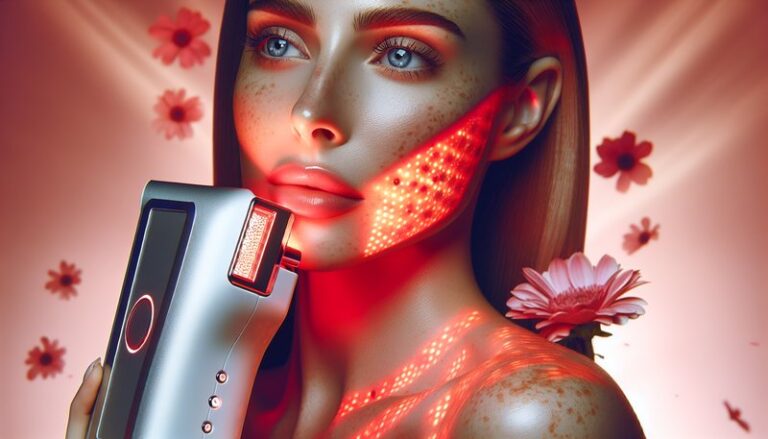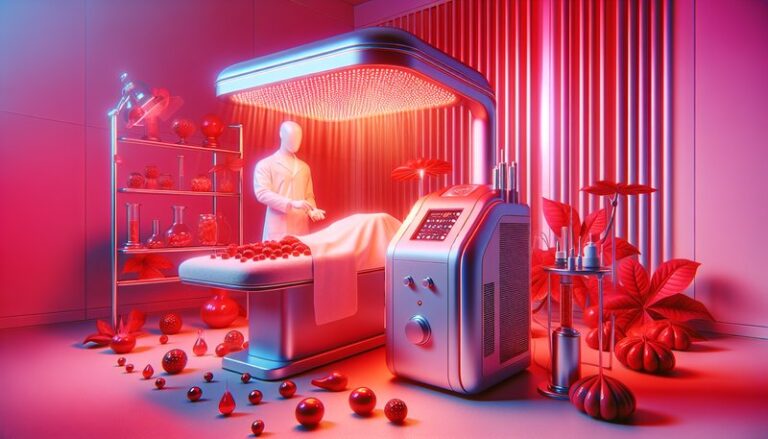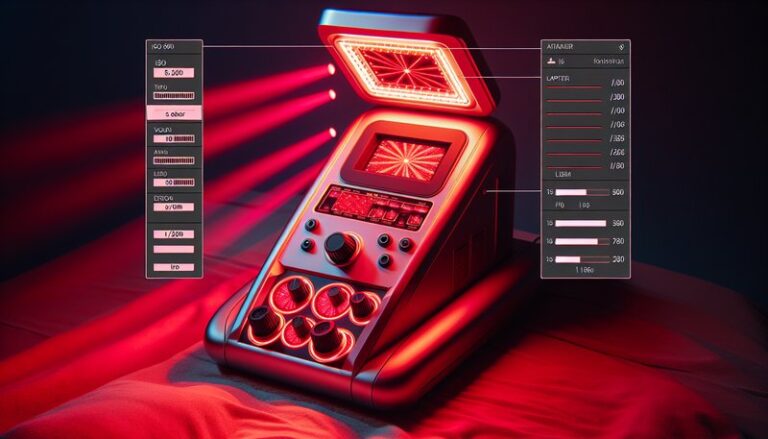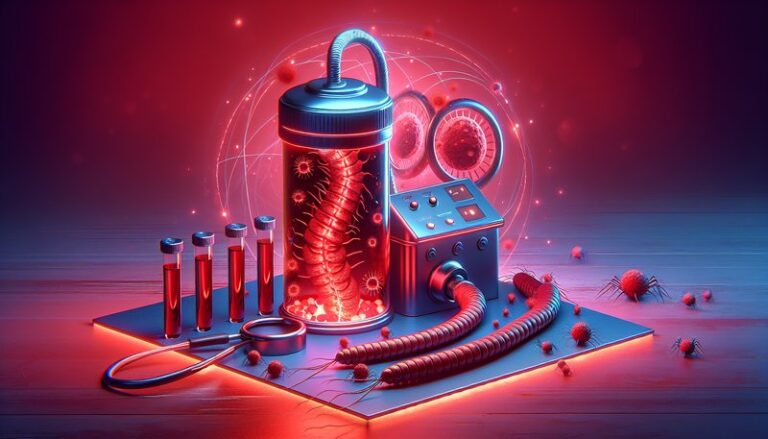How Often Should You Use Red Light Therapy?
How Often Should You Use Red Light Therapy?
What is the optimal frequency for experiencing the benefits of red light therapy?
Red light therapy (RLT) has gained significant popularity as a non-invasive treatment promising a range of benefits for skin health, pain relief, and muscle recovery. But how often should you incorporate it into your routine? This article will explore the recommended frequency for red light therapy, its benefits, considerations, alternatives, and much more.
Key Takeaways
- Regular use of red light therapy can enhance its effectiveness, with recommended sessions typically ranging from 3 to 5 times a week.
- Individual preferences and specific health goals play a crucial role in determining the frequency of treatments.
- It’s important to consider safety, duration of exposure, and potential side effects when planning your red light therapy sessions.
What is Red Light Therapy?
Red light therapy is a treatment that uses low-level wavelengths of red and near-infrared light to promote healing and various health benefits. This type of therapy is often applied through devices such as LED lamps, handheld devices, or full-body panels specifically designed to emit the therapeutic wavelengths.
The therapy works by stimulating cellular processes, leading to increased energy production in cells via ATP (adenosine triphosphate), which helps improve circulation, reduce inflammation, and enhance healing.
How Does it Work?
When red light penetrates the skin, it is absorbed by the mitochondria in the cells, which enhances their efficiency. This process not only aids in repair and recovery but can also improve skin conditions, reduce signs of aging, and alleviate pain.
What are the Benefits of Red Light Therapy?
Red light therapy comes with a myriad of benefits that make it a compelling choice for many individuals. The following points will delve into some of the notable advantages of utilizing this therapy.
Skin Health Improvement
Many users report significant improvements in skin conditions such as acne, eczema, and psoriasis after consistent use of red light therapy. Studies have shown that RLT can boost collagen production, helping to reduce fine lines and improve overall skin texture.
Pain Relief
Red light therapy has been shown to alleviate various types of pain, including joint pain, muscle soreness, and even chronic pain conditions. The anti-inflammatory properties of red light therapy can provide relief to those suffering from conditions like arthritis or sports injuries.
Faster Muscle Recovery
Athletes and fitness enthusiasts often use red light therapy to enhance muscle recovery after workouts. RLT has the potential to reduce muscle soreness and expedite healing, allowing individuals to return to their training regimens faster.
Enhanced Mood and Well-being
Emerging research suggests that red light therapy may also have positive effects on mood and mental well-being. Regular exposure can help alleviate symptoms of seasonal affective disorder (SAD) and improve overall emotional health.
Is it Possible to Overuse Red Light Therapy?
While red light therapy can provide numerous benefits, it’s essential to understand the potential risks of overuse. Generally speaking, the frequency and duration of sessions should vary based on personal goals, device specifications, and individual skin sensitivity.
What are the Advantages of Moderation?
Using red light therapy in moderation ensures the body can properly benefit from each session without overwhelming the cells. Additionally, moderation may help prevent potential skin irritation or adverse effects.
What are the Disadvantages of Overuse?
Overusing red light therapy can lead to diminished returns where the body becomes desensitized to the treatment, potentially resulting in reduced effectiveness. Furthermore, excessive exposure might lead to skin issues like irritation, especially for individuals with sensitive skin.
What are the Things to Consider Before Using Red Light Therapy?
Before starting red light therapy, several factors should be evaluated to maximize effectiveness and ensure safety.
Skin Type and Sensitivity
It’s crucial to assess your skin type and sensitivity before beginning treatment. Individuals with sensitive skin may need to start with shorter sessions and less frequency to determine how their skin reacts.
Device Quality
The effectiveness of red light therapy heavily depends on the quality of the device being used. Ensure you invest in a reputable brand that emits the appropriate wavelengths for therapeutic use.
Goals and Conditions
Different health goals may require different frequencies and durations of treatment. Consult with a healthcare professional to tailor your red light therapy sessions to your specific needs.
What are the Alternatives to Red Light Therapy?
If red light therapy doesn’t suit your needs or preferences, there are various alternative treatments available that provide similar benefits.
Infrared Saunas
Infrared saunas use infrared light to penetrate the skin and promote detoxification, relaxation, and improved circulation. These saunas can provide a holistic approach to wellness.
Blue Light Therapy
Primarily used for acne treatment, blue light therapy targets the bacteria that cause acne. While its focus is different, it can be an effective alternative for those dealing with skin issues.
Cold Laser Therapy
Similar to red light therapy, cold laser therapy uses specific wavelengths of light to stimulate healing and reduce inflammation, primarily focusing on pain management.
Conclusion: Is it Recommended to Use Red Light Therapy Regularly?
In conclusion, incorporating red light therapy into your health regimen can yield numerous benefits, from improving skin health to enhancing recovery. Regular use is typically recommended, ranging from three to five sessions weekly, depending on individual goals and responses. However, it’s essential to listen to your body and consult with a professional if in doubt.
Frequently Asked Questions
How long should each red light therapy session last?
Most sessions range from 10 to 20 minutes, depending on the treatment area and device type. It’s essential to follow the specific guidelines provided with your device.
Can anyone use red light therapy?
While many people can safely use red light therapy, individuals with certain medical conditions or skin sensitivities should consult a healthcare professional before starting treatment.
Discover the complete guide Does Red Light Therapy Eradicate Viruses?
Check out our breakdown Red Light Therapy Frequency
Will I see immediate results from red light therapy?
Some users report immediate benefits, such as reduced pain or a boost in mood; however, many effects may take several sessions to become noticeable, particularly for skin health improvements.
Are there any side effects to be aware of?
Red light therapy is generally considered safe; however, potential side effects may include temporary redness or irritation of the skin, particularly when first starting treatment.
Can I do red light therapy at home?
Yes, many devices are available for at-home use, but it’s crucial to select a high-quality product that meets safety and efficacy standards.
